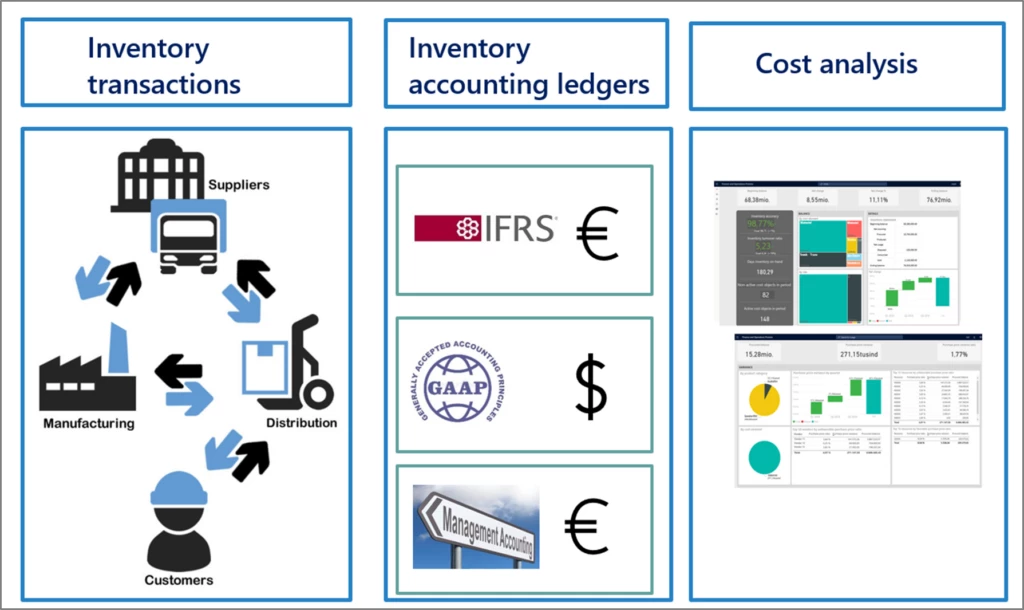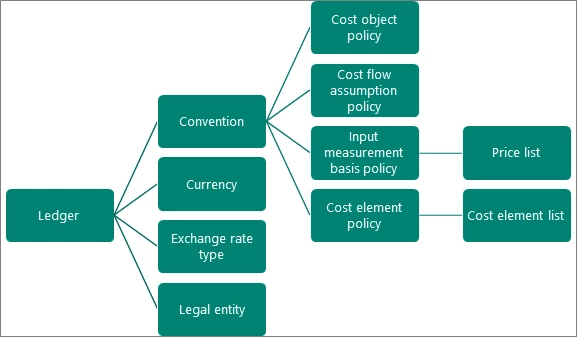
Parallel cost accounting now available with Global Inventory Accounting Add-in for Supply Chain Management
With the new Global Inventory Accounting Add-in, Microsoft Dynamics 365 Supply Chain Management now supports parallel cost accounting. The ability to perform inventory accounting using multiple costing ledgers enables organizations that do business internationally to easily comply with multiple accounting standards at the same time.
Global organizations face complex accounting challenges
International organizations face a complex accounting challenge when they produce and sell items across many countries. For each item they produce and sell, they must often calculate multiple representations of inventory costs to comply with local generally accepted accounting principles, statutory accounting principles like the International Financial Reporting Standards (IFRS), and internal management accounting practices, even when these directly conflict with one another.
In addition, companies may need to account inventory costings using both a potentially fluctuating local currency and a solid second currency for statutory compliance. Finally, companies may need to use one cost valuation method internally, and a different one for their local country or region.
Parallel cost accounting made easier
A key feature of the Global Inventory Accounting Add-in is its ability to create a single document that applies multiple accounting rules simultaneously based on different currencies, input measurement bases, and cost flow assumptions. With the new multi-ledger functionality, organizations can define as many costing ledgers as they need. Inventory accounting in dual currencies and in dual valuations are both supported.
For example, a subsidiary in a country with a hyper-fluctuating local currency is required by the local government to account and manage inventory in the local currency. At the same time, to comply with IFRS, the subsidiary must also account and manage inventory in a stable currency like USD or EUR. With Global Inventory Accounting, the subsidiary can record and check values in multiple currencies by switching between various predefined ledgers for a specific sales order.
Because Global Inventory Accounting runs as a micro service, it provides inventory statements, valuations, and variance reporting in cloud-hosted environments such as Microsoft Dataverse.

Greater visibility into costs with Power BI reporting
Global Inventory Accounting also enables organizations to analyze their costs in greater detail. Organizations can retrieve informative Power BI reports for further analysis, and use the included templates to generate inventory overviews, inventory statements, and more for cost controllers and managers to analyze costs and make decisions about future changes.

Parallel cost accounting: Behind the scenes
Global Inventory Accounting performs inventory accounting in individual ledgers. Organizations can create as many costing ledgers for each of their legal entities as needed to ensure they can obtain multiple inventory representations. All documents (such as purchase orders, sales orders, transfer orders, and so on) that are posted in a legal entity are accounted in all the costing ledgers that are associated with the entity.
The following diagram shows the composition of a Global Inventory Accounting ledger.

Looking ahead
To empower organizations to achieve compliance while operating internationally, Global Inventory Accounting supports both standard cost and moving average for retail and distribution industries. Future enhancements will target manufacturing companies by adding support for standard cost, moving average, weighted average, first in first out (FIFO), and other calculation methods.
Learn more
Read the product documentation: Global Inventory Accounting home page – Supply Chain Management | Dynamics 365 | Microsoft Learn
Not yet a Dynamics 365 Supply Chain Management customer? Take a guided tour.



